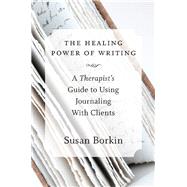The Healing Power of Writing A Therapist's Guide to Using Journaling With Clients

The Healing Power of Writing A Therapist's Guide to Using Journaling With Clients
- ISBN 13:
9780393708219
- ISBN 10:
0393708217
- Format: Hardcover
- Copyright: 03/31/2014
- Publisher: W. W. Norton & Company
List Price $24.95 Save $0.87
This is a hard-to-find title. We are making every effort to obtain this item, but do not guarantee stock.
We Buy This Book Back!
Free Shipping On Every Order
Note: Supplemental materials are not guaranteed with Rental or Used book purchases.
Extend or Purchase Your Rental at Any Time
Need to keep your rental past your due date? At any time before your due date you can extend or purchase your rental through your account.








